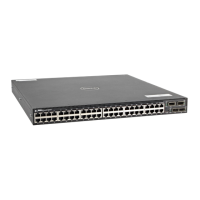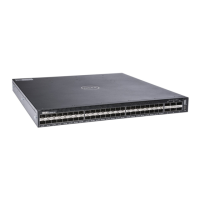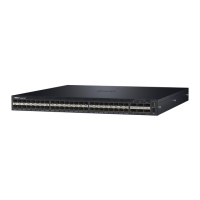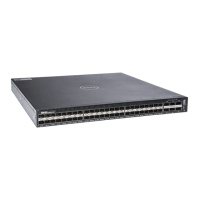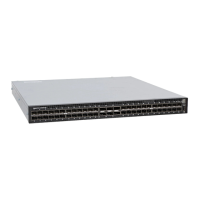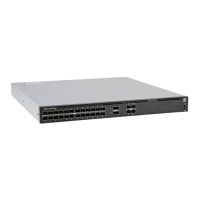Command
Modes
ROUTER OSPF
Command
History
This guide is platform-specific. For command information about other platforms,
refer to the relevant Dell Networking OS Command Line Reference Guide.
The following is a list of the Dell Networking OS version history for this command.
Version 9.0.2.0 Introduced on the S6000.
Version
8.3.19.0
Introduced on the S4820T.
Version 8.3.11.1 Introduced on the Z9000.
Version 8.3.7.0 Introduced on the S4810.
Version 7.8.1.0 Introduced to all platforms.
Version 7.6.1.0 Introduced on the S-Series.
Version 7.5.1.0 Introduced on the C-Series.
pre-Version
6.1.1.1
Introduced on the E-Series.
Usage
Information
To enable OSPF on an interface, the network area command must include, in its
range of addresses, the primary IP address of an interface.
NOTE: An interface can be attached only to a single OSPF area.
If you delete all the network area commands for Area 0, the show ip ospf
command output does not list Area 0.
passive-interface
Suppress both receiving and sending routing updates on an interface.
S4810
Syntax
passive-interface {default | interface}
To enable both the receiving and sending routing, use the no passive-
interface interface command.
To return all OSPF interfaces (current and future) to active, use the no passive-
interface default command.
Parameters
default Enter the keyword default to make all OSPF interfaces
(current and future) passive.
interface Enter the following keywords and slot/port or number
information:
1190
Open Shortest Path First (OSPFv2 and OSPFv3)
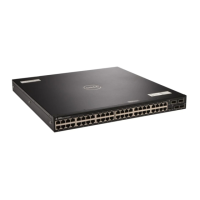
